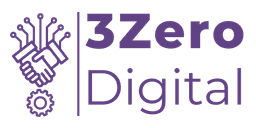32 Must-Have Security Measures for Your Website in 2025
As cyber threats continue to evolve, securing your website in 2025 requires proactive measures and the latest security practices. This comprehensive checklist highlights critical steps to protect your site against vulnerabilities, ensuring optimal performance and safety.
1. Detect & Block Spambots Posting Comments
Spambots flood your comment section with irrelevant or malicious links. Security tools with spam detection capabilities can block these bots and keep your website’s content clean.
2. Comment Spam IP Monitoring
By monitoring IP addresses associated with spam comments, you can effectively blacklist suspicious IPs to prevent recurring attacks.
3. Added Honeypot in All Forms
A honeypot is a hidden field designed to trap bots while remaining invisible to human users. Adding honeypot protection in forms prevents bots from successfully submitting spam.
4. 404 Detection
Repeated 404 errors can indicate malicious attempts to discover vulnerable files. Implement 404 detection tools to identify and block suspicious behavior.
5. Cloudflare Turnstile
Cloudflare Turnstile is an effective CAPTCHA alternative that verifies user behavior without disrupting their experience, reducing bot traffic significantly.
6. XMLRPC and Pingback Vulnerability Protection
The XMLRPC API is often targeted for DDoS and brute force attacks. Disabling or restricting this feature helps to protect your website from such exploits.
7. Disable RSS and ATOM Feeds
If your site does not require RSS or ATOM feeds, disabling these can reduce entry points for attackers.
8. Proxy Comment Posting Protection
Prevent attackers from posting comments through proxy servers to ensure legitimate user engagement.
9. Bad Query Strings Protection
Blocking requests with malicious query strings can help mitigate SQL injection and other web-based attacks.
10. Advanced Character String Filter
Implementing an advanced filter that detects and blocks suspicious character patterns helps to secure your site from harmful input.
11. Disallow Unauthorized REST Requests
Restrict unauthorized access to the REST API to limit exposure to sensitive information.
12. Block Access to Debug Log File
Exposing your debug.log file can reveal critical information about your site’s structure. Blocking access to this file is essential.
13. Disable Listing of Directory Contents
Disabling directory indexing prevents attackers from browsing your site’s directory structure.
14. 6G Firewall Protection
The 6G firewall is a comprehensive security solution that protects your site from a wide range of common web threats.
15. AIOS Firewall Protection
AIOS firewall effectively secures websites by filtering harmful requests and blocking suspicious activities.
16. File Protection
Restrict file access to authorized users only, ensuring sensitive website files remain secure.
17. Prevent Hotlinking
Hotlinking allows others to embed your images or content directly on their site, draining your bandwidth. Hotlink protection prevents this abuse.
18. Disable PHP File Editing
By disabling file editing within your website’s admin panel, you reduce the risk of attackers modifying theme or core files.
19. iFrame Protection
Enabling iFrame protection prevents your website from being embedded maliciously into other websites.
20. Database Security
Implement measures like database prefix changes, encryption, and restricted access to secure your website database.
21. Disable User Enumeration
Attackers can exploit user enumeration to identify administrator usernames. Disabling this feature prevents unauthorized access attempts.
22. Force Logout Users After Inactivity
Forcing user logouts after a set period of inactivity minimizes the risk of unauthorized access in public or shared environments.
23. Salt Postfix
Adding a custom salt postfix strengthens password hashing, making it harder for attackers to decrypt passwords.
24. WAF Firewall
A Web Application Firewall (WAF) provides real-time threat prevention by blocking malicious traffic before it reaches your website.
25. Hide Website Version
Displaying your website’s version exposes your site to vulnerabilities associated with outdated versions. Hiding the version number protects your site.
26. Disable Code Execution for Uploads Directory
Preventing PHP code execution in the /uploads directory reduces the risk of backdoor file uploads.
27. SQL Injection Protection
SQL injection exploits malicious database queries. Implement security measures and input validation to protect your website.
28. XSS (Cross-Site Scripting) Protection
XSS attacks inject malicious scripts into web pages. Enabling content security policies (CSP) and data validation mitigates this risk.
29. Malicious File Upload Protection
Scan uploaded files for suspicious content and restrict file types to minimize malicious file uploads.
30. XXE (External Entity Expansion) Protection
Disable XML external entities to prevent attackers from exploiting your site’s XML parser.
31. LFI (Local File Inclusion) Protection
Limit file inclusion permissions and restrict direct access to sensitive files to prevent LFI attacks.
32. Brute Force Protection
Enforce strong password policies, use CAPTCHA verification, and limit login attempts to prevent brute force attacks.
Final Thoughts
By implementing these website security measures, you significantly reduce the risk of cyber threats. Prioritizing security ensures the stability, performance, and trustworthiness of your website. Regularly updating core files, themes, and frameworks is equally important to stay ahead of emerging vulnerabilities.
Leave a Comment
Comments (0)
No comments yet. Be the first to comment!

